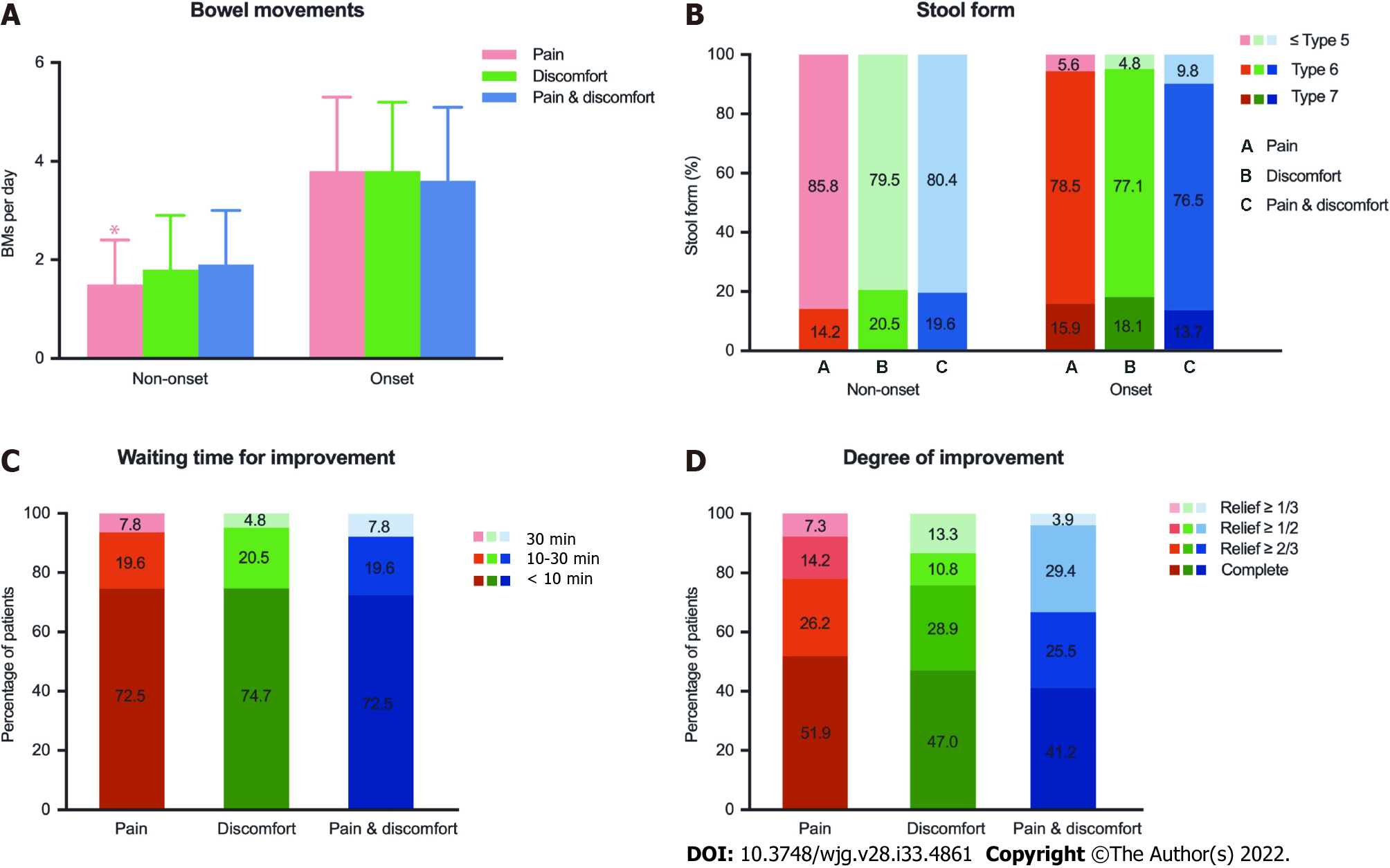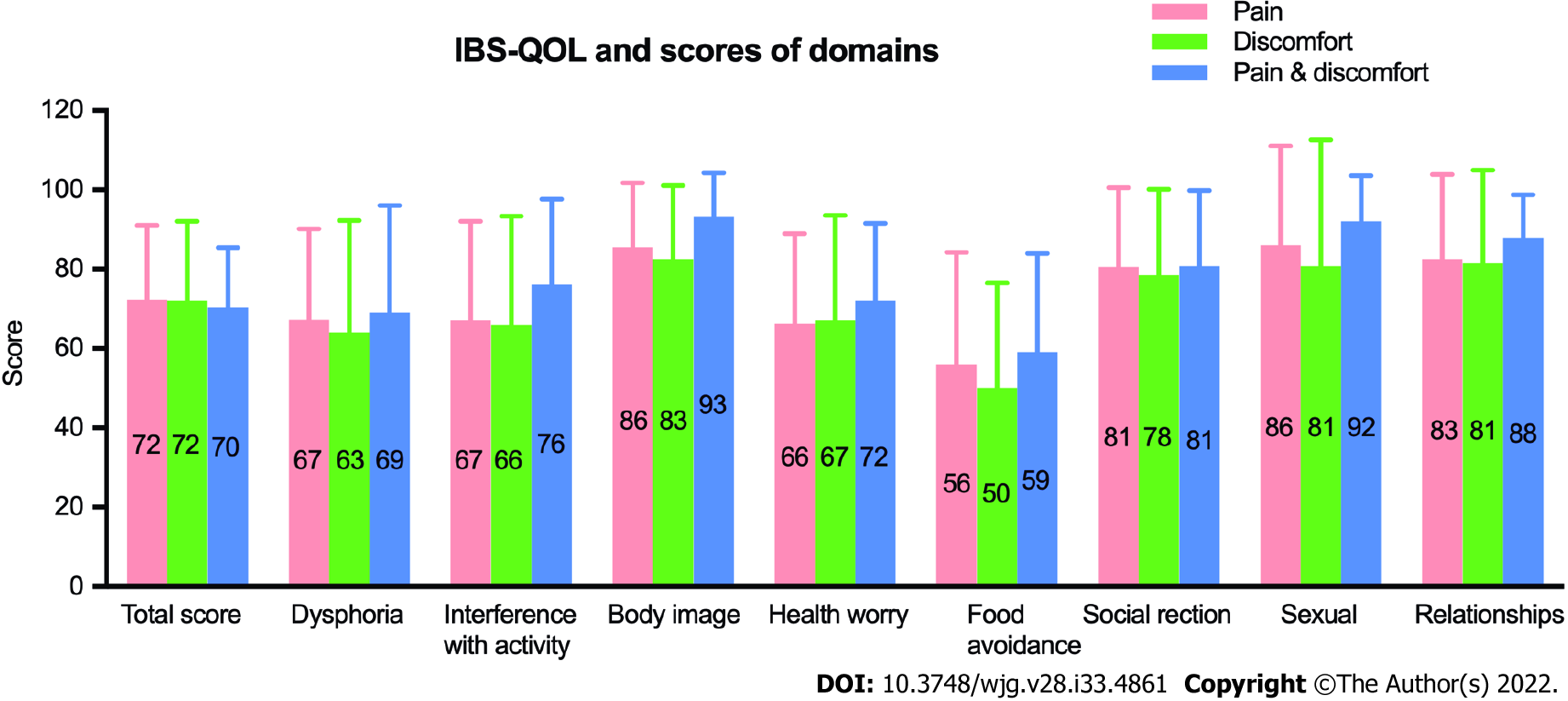Copyright
©The Author(s) 2022.
World J Gastroenterol. Sep 7, 2022; 28(33): 4861-4874
Published online Sep 7, 2022. doi: 10.3748/wjg.v28.i33.4861
Published online Sep 7, 2022. doi: 10.3748/wjg.v28.i33.4861
Figure 1 Constitution diagram of irritable bowel syndrome patients diagnosed with Rome III and Rome IV criteria.
About one-third of irritable bowel syndrome patients (parts dragged out of ring) diagnosed with Rome III criteria failed in irritable bowel syndrome diagnosis with Rome IV criteria because of only having abdominal discomfort before defecation (in green, 22.6%) or frequency of abdominal pain less than 1 d/wk (in light colors, 14.2%), which 3% of patients among them have discomfort alone with less frequency (in light green). IBS: Irritable bowel syndrome.
Figure 2 Comparison of bowel movements and stool forms in irritable bowel syndrome with diarrhea patients and improvement of abdominal pain or discomfort after defecation in irritable bowel syndrome patients among the abdominal pain alone, abdominal discomfort alone, and abdominal pain & discomfort groups.
A: Bowel movements during irritable bowel syndrome with diarrhea non-onset and onset status; B: Stool forms based on Bristol Stool Form Scale during irritable bowel syndrome with diarrhea non-onset and onset status; C: Degree of improvement of abdominal pain and discomfort with defecation; D: Waiting time for improvement of abdominal pain and discomfort with defecation in irritable bowel syndrome patients. Numbers in the column are percentages. bP < 0.01. BM: Bowel movement.
Figure 3 Comparison of irritable bowel syndrome-quality of life.
There were no significant differences in the total score and eight domain scores among the three groups. Numbers in the column are percentages. IBS-QOL: Irritable bowel syndrome-quality of life.
- Citation: Fang XC, Fan WJ, Drossman DD, Han SM, Ke MY. Are bowel symptoms and psychosocial features different in irritable bowel syndrome patients with abdominal discomfort compared to abdominal pain? World J Gastroenterol 2022; 28(33): 4861-4874
- URL: https://www.wjgnet.com/1007-9327/full/v28/i33/4861.htm
- DOI: https://dx.doi.org/10.3748/wjg.v28.i33.4861











